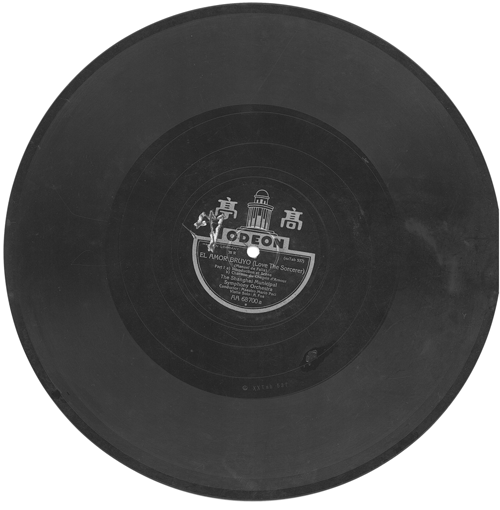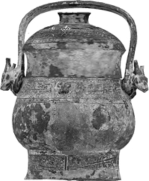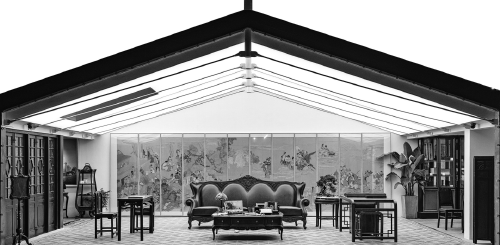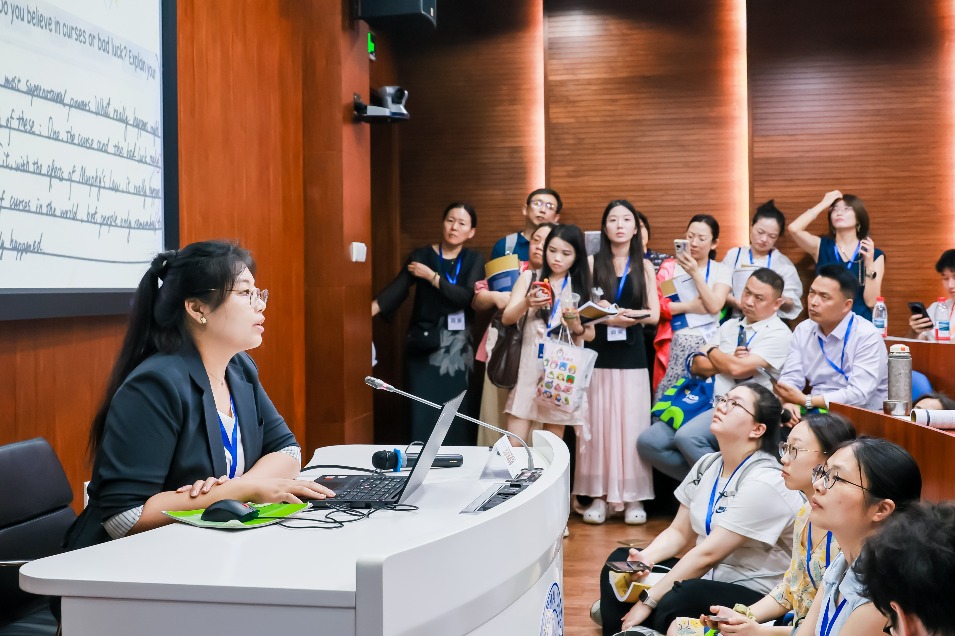JUMPING IN ON THE ACTION
Eager to engage with audiences and promote the arts, Shanghai's major cultural institutions have been releasing their own NFTs, all of which have been snapped up within seconds

From China's first symphony recording to 2,000-year-old bronze objects, art works of all types are being turned into non-fungible tokens (NFT) by leading cultural institutions in Shanghai looking to engage audiences and promote their cultural assets.
NFT digital collectibles that use block-chain technology to permanently attach unique digital signatures to art works have been gaining popularity around the world since last year. For example, Christie's held its first NFT auction in February last year when Everydays: the First 5,000 Days, a collage of digital images created by US artist Beeple, fetched a whopping $69.34 million.
In the first quarter of this year, $16.475 billion worth of NFTs were traded around the world, according to Nonfungible.com, a leading NFT data resource.
Many celebrities who are renowned in China have also jumped on the bandwagon and driven up the hype. Last November, Singaporean singer-songwriter JJ Lin announced that he had spent $70,000 on three pieces of virtual real estate in Decentraland, a metaverse platform.
Earlier this year, Mandopop icon Jay Chou made the news when he posted on social media that his Bored Ape Yacht Club NFT, which was worth more than half a million dollars, was stolen.
Art gone digital
Shanghai Symphony Orchestra (SSO) was among the first State-owned cultural institutions in China to release its own NFTs, having done so in March.
The reception was overwhelming. Ten thousand copies of China's first symphony recording, each priced at 19.9 yuan ($2.86), sold out within a minute.
The audio file contains the 1929 recording of the Shanghai Municipal Orchestra's performance of Spanish composer Manuel de Falla's (1876-1946) ballet music El Amor Brujo, which featured conductor Mario Paci (1878-1946) and violinist Arrigo Foa (1900-1981).
"It was gone so quickly that the staff failed to buy any," said Lu Jing, who is responsible for merchandise development at the SSO.
Lu expressed regret that she could not get a copy of the NFT for Xu Shen, who donated the original vinyl recording left by his late father Xu Buzeng to the SSO in 2020.
The original vinyl later became a part of the collection of Shanghai Symphony Museum, which is run by the SSO. The orchestra also launched a ceramic ware series inspired by the vinyl disc last year.
With a history of 142 years, the SSO is the first symphony orchestra in China. Originally called the Shanghai Public Band, the organization was renamed the Shanghai Municipal Orchestra in 1922. Under the baton of the Italian conductor Paci, the orchestra promoted Western music and trained young Chinese talent and was the first to introduce Chinese orchestral music to audiences.
Auditory history
According to Lu, the SSO's NFT undertaking was never about generating revenue, but about engaging with audiences. The orchestra also saw it as a way to introduce its stories to new audiences.
"We felt that our NFT had to be something unique. It could not just be a contemporary music album that people can find on Apple Music or other music apps. That would be no different from releasing another digital album," said Lu.
"We then read about the recording of El Amor Brujo and realized that we have a program list of the concert in our museum collection."
The recording was made by the German music label Odeon, which had sent audio engineers to have the performance recorded before producing the vinyl back in Germany, as the technology was not available in China at that time. According to a music historian in Germany, this was likely the first complete recording of El Amor Brujo in the world.
Xu Buzeng, a translator and music expert, had acquired El Amor Brujo in the 1940s. Before his death in 2019, he instructed his son to donate the symphony recording to the SSO. Zhou Ping, the director of the SSO, called the recording "one of the most treasured objects in the Shanghai Symphony Museum."
"But just keeping it in the museum cabinet meant that not many people could listen to it. We thought that turning it into an NFT would allow us to share its story and this chapter in China's music history with more people," said Lu.
According to Zhou, the SSO is considering releasing new digital music albums in the form of NFTs in the future.
Promoting traditional art
On April 18, art institution Duoyunxuan followed suit and released an NFT comprising traditional wood prints from a famous screen painting by a Chinese artist. The 24,000 copies that were made available similarly sold out within a minute.
Founded in 1900, Duoyunxuan has functions that include auction, reproduction and publication of artwork in China, and is especially known for its collection of water-ink paintings. The institution has also developed and refined traditional Chinese wood print techniques, which were used to make high-quality replications of Chinese ink paintings before modern printing machinery was available in China. Duoyunxuan's wood print handicraft has been recognized as an intangible cultural heritage of China.
"We have noticed the irreversible rise of the digital economy, and this was closely followed by the global NFT trend and the burgeoning market for digital art," said Chen Jiayong, an executive with Duoyunxuan. "We felt that we would not be able to understand how this trend works if we did not try to be a part of it."
The NFT by Duoyunxuan features the 12-piece Chinese painting by Ren Bonian (1840-1895) which depicts the gathering of 46 immortals in a heavenly palace. In reality, the screens form a larger artwork measuring 206.8 centimeters in height and 714 centimeters in width.
The screens were exhibited at the World Expo 2010 in Shanghai, as well as the second edition of the China International Import Expo in 2019.
"Several generations of our finest craftsmen dedicated their entire careers to this work, and it is recognized as the most important woodprint masterpiece by Duoyunxuan. This work represents the highest level we could possibly achieve with the traditional handicraft," said Chen.
"We believe that this is an appropriate choice for our first NFT release," he added. "We are also keeping close watch on contemporary artists that are working with digital media and looking to find potential collaborators for new digital projects."
As a State-owned company, Duoyunxuan is cautious about the risks involved in the emerging NFT segment, but is also optimistic of what it could bring to the arts community.
"We are closely following the national policies regarding this field and have noticed the major metaverse platforms have lately been going through a period of adjustment," Chen said.
"I believe that as this sector continues to develop, new artworks will emerge and new business forms will be created. Art is an indispensable part of virtual life as much as in real life. Maybe one day people would decorate their virtual rooms with NFT artwork, just like in their actual home."
According to current regulations in China, NFTs cannot be resold and can only be presented as gifts to another person six months after its acquisition.
The Shanghai Museum is the latest to join the action, having released NFTs in August to introduce two important artifacts that were showcased at its new exhibition The Making of China: the Civilization of Xia, Shang and Zhou Dynasties.
The two NFTs, one of a you (wine vessel) from the early Western Zhou period (1046 BC to 771 BC), and the other of a sheng, which is known as China's first standardized unit of measurement, sold out almost instantly.
The museum also unveiled its own mobile application during the launch of the NFT, making it the first museum in China to have a digital collection supported by its own blockchain system.
On Sept 2, Shanghai Museum released its second series of NFTs, and the digital collectibles of a bronze water vessel named Zi Zhong Jiang Pan and a bronze halberd named Shang Yang Ji were similarly snapped up within seconds.
The museum recently started allowing reservations for its next batch of NFTs featuring two lacquer art objects that would be released during the Mid-Autumn Festival. The museum is also working with the Capital Museum in Beijing and will sell two NFTs of ceramic pieces from the latter's collection.





Today's Top News
- 20th CPC Central Committee to hold fourth plenary session in October
- Stable, healthy Sino-US business ties beneficial to all
- Fifth volume of 'Xi Jinping: The Governance of China' published
- Nanjing film aims to counter amnesia
- China and US agree to push for extension of tariff pause after Stockholm negotiations
- US, China trade talks candid, in-depth, constructive, says China intl trade representative






























